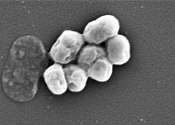Scientists develop 'body-on- a-chip' system to accelerate testing of new drugs
Using the same expertise they've employed to build new organs for patients, scientists at Wake Forest Institute for Regenerative Medicine and colleagues have engineered micro hearts, lungs and livers that can potentially ...









